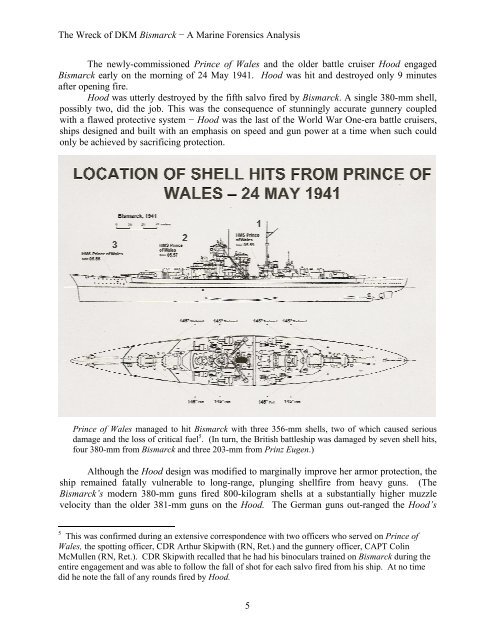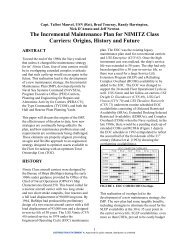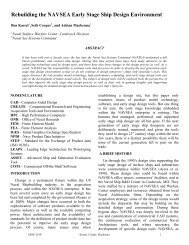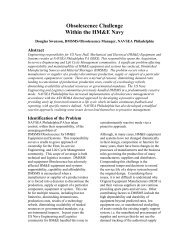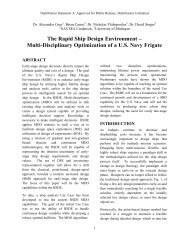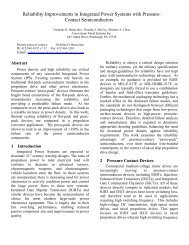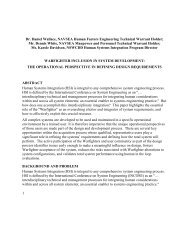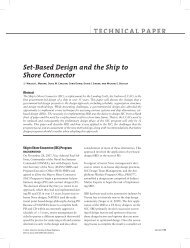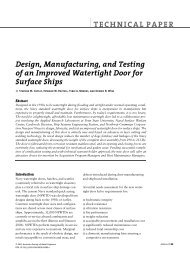The Wreck of DKM Bismarck − A Marine Forensics Analysis 1 The ...
The Wreck of DKM Bismarck − A Marine Forensics Analysis 1 The ...
The Wreck of DKM Bismarck − A Marine Forensics Analysis 1 The ...
You also want an ePaper? Increase the reach of your titles
YUMPU automatically turns print PDFs into web optimized ePapers that Google loves.
<strong>The</strong> <strong>Wreck</strong> <strong>of</strong> <strong>DKM</strong> <strong>Bismarck</strong> <strong>−</strong> A <strong>Marine</strong> <strong>Forensics</strong> <strong>Analysis</strong><br />
<strong>The</strong> newly-commissioned Prince <strong>of</strong> Wales and the older battle cruiser Hood engaged<br />
<strong>Bismarck</strong> early on the morning <strong>of</strong> 24 May 1941. Hood was hit and destroyed only 9 minutes<br />
after opening fire.<br />
Hood was utterly destroyed by the fifth salvo fired by <strong>Bismarck</strong>. A single 380-mm shell,<br />
possibly two, did the job. This was the consequence <strong>of</strong> stunningly accurate gunnery coupled<br />
with a flawed protective system <strong>−</strong> Hood was the last <strong>of</strong> the World War One-era battle cruisers,<br />
ships designed and built with an emphasis on speed and gun power at a time when such could<br />
only be achieved by sacrificing protection.<br />
Prince <strong>of</strong> Wales managed to hit <strong>Bismarck</strong> with three 356-mm shells, two <strong>of</strong> which caused serious<br />
damage and the loss <strong>of</strong> critical fuel 5 . (In turn, the British battleship was damaged by seven shell hits,<br />
four 380-mm from <strong>Bismarck</strong> and three 203-mm from Prinz Eugen.)<br />
Although the Hood design was modified to marginally improve her armor protection, the<br />
ship remained fatally vulnerable to long-range, plunging shellfire from heavy guns. (<strong>The</strong><br />
<strong>Bismarck</strong>’s modern 380-mm guns fired 800-kilogram shells at a substantially higher muzzle<br />
velocity than the older 381-mm guns on the Hood. <strong>The</strong> German guns out-ranged the Hood’s<br />
5 This was confirmed during an extensive correspondence with two <strong>of</strong>ficers who served on Prince <strong>of</strong><br />
Wales, the spotting <strong>of</strong>ficer, CDR Arthur Skipwith (RN, Ret.) and the gunnery <strong>of</strong>ficer, CAPT Colin<br />
McMullen (RN, Ret.). CDR Skipwith recalled that he had his binoculars trained on <strong>Bismarck</strong> during the<br />
entire engagement and was able to follow the fall <strong>of</strong> shot for each salvo fired from his ship. At no time<br />
did he note the fall <strong>of</strong> any rounds fired by Hood.<br />
5


